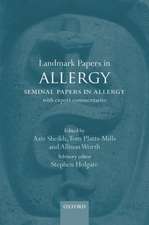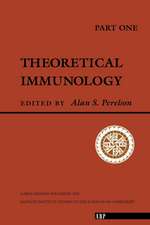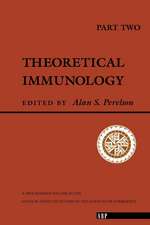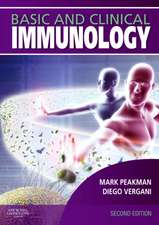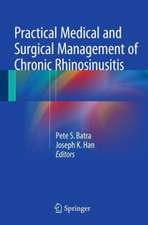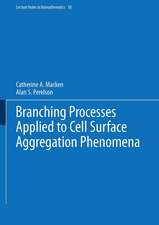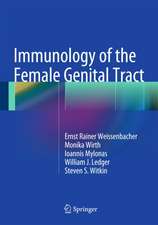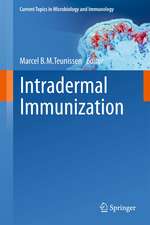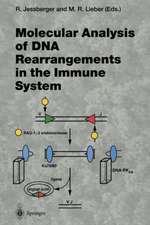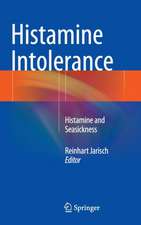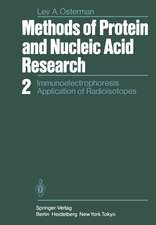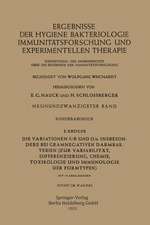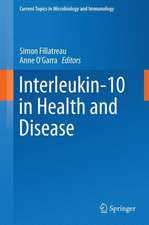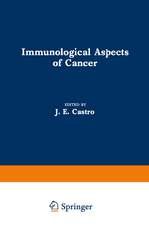Theoretical and Experimental Insights into Immunology: Nato ASI Subseries H:, cartea 66
Editat de Alan S. Perelson, Gerard Weisbuchen Limba Engleză Paperback – 16 dec 2011
Din seria Nato ASI Subseries H:
- 18%
 Preț: 953.82 lei
Preț: 953.82 lei -
 Preț: 393.13 lei
Preț: 393.13 lei - 15%
 Preț: 643.34 lei
Preț: 643.34 lei - 15%
 Preț: 643.34 lei
Preț: 643.34 lei - 15%
 Preț: 641.03 lei
Preț: 641.03 lei - 15%
 Preț: 642.83 lei
Preț: 642.83 lei - 15%
 Preț: 642.51 lei
Preț: 642.51 lei - 5%
 Preț: 712.81 lei
Preț: 712.81 lei -
 Preț: 392.97 lei
Preț: 392.97 lei - 15%
 Preț: 651.02 lei
Preț: 651.02 lei - 15%
 Preț: 640.24 lei
Preț: 640.24 lei - 18%
 Preț: 948.61 lei
Preț: 948.61 lei - 15%
 Preț: 655.92 lei
Preț: 655.92 lei - 15%
 Preț: 655.92 lei
Preț: 655.92 lei - 15%
 Preț: 653.14 lei
Preț: 653.14 lei - 15%
 Preț: 650.19 lei
Preț: 650.19 lei - 15%
 Preț: 655.13 lei
Preț: 655.13 lei - 15%
 Preț: 652.17 lei
Preț: 652.17 lei - 15%
 Preț: 675.58 lei
Preț: 675.58 lei - 18%
 Preț: 958.07 lei
Preț: 958.07 lei - 18%
 Preț: 961.41 lei
Preț: 961.41 lei - 18%
 Preț: 970.56 lei
Preț: 970.56 lei - 5%
 Preț: 1100.30 lei
Preț: 1100.30 lei - 5%
 Preț: 376.43 lei
Preț: 376.43 lei - 15%
 Preț: 650.86 lei
Preț: 650.86 lei - 15%
 Preț: 644.63 lei
Preț: 644.63 lei - 15%
 Preț: 655.60 lei
Preț: 655.60 lei - 18%
 Preț: 963.47 lei
Preț: 963.47 lei - 15%
 Preț: 648.42 lei
Preț: 648.42 lei - 5%
 Preț: 731.43 lei
Preț: 731.43 lei - 15%
 Preț: 653.14 lei
Preț: 653.14 lei - 18%
 Preț: 960.13 lei
Preț: 960.13 lei - 18%
 Preț: 968.34 lei
Preț: 968.34 lei - 18%
 Preț: 953.97 lei
Preț: 953.97 lei - 15%
 Preț: 654.95 lei
Preț: 654.95 lei - 15%
 Preț: 652.49 lei
Preț: 652.49 lei - 15%
 Preț: 650.86 lei
Preț: 650.86 lei - 5%
 Preț: 367.64 lei
Preț: 367.64 lei - 5%
 Preț: 1104.68 lei
Preț: 1104.68 lei - 18%
 Preț: 953.20 lei
Preț: 953.20 lei - 15%
 Preț: 651.99 lei
Preț: 651.99 lei - 15%
 Preț: 647.27 lei
Preț: 647.27 lei - 15%
 Preț: 653.00 lei
Preț: 653.00 lei - 15%
 Preț: 656.25 lei
Preț: 656.25 lei - 18%
 Preț: 962.35 lei
Preț: 962.35 lei - 15%
 Preț: 644.82 lei
Preț: 644.82 lei - 15%
 Preț: 666.55 lei
Preț: 666.55 lei - 15%
 Preț: 642.68 lei
Preț: 642.68 lei - 15%
 Preț: 645.96 lei
Preț: 645.96 lei - 15%
 Preț: 651.84 lei
Preț: 651.84 lei
Preț: 1298.86 lei
Preț vechi: 1367.23 lei
-5% Nou
Puncte Express: 1948
Preț estimativ în valută:
248.55€ • 265.77$ • 207.23£
248.55€ • 265.77$ • 207.23£
Carte tipărită la comandă
Livrare economică 17 aprilie-01 mai
Preluare comenzi: 021 569.72.76
Specificații
ISBN-13: 9783642769795
ISBN-10: 3642769799
Pagini: 508
Ilustrații: XVIII, 480 p.
Dimensiuni: 170 x 242 x 27 mm
Greutate: 0.8 kg
Ediția:Softcover reprint of the original 1st ed. 1992
Editura: Springer Berlin, Heidelberg
Colecția Springer
Seria Nato ASI Subseries H:
Locul publicării:Berlin, Heidelberg, Germany
ISBN-10: 3642769799
Pagini: 508
Ilustrații: XVIII, 480 p.
Dimensiuni: 170 x 242 x 27 mm
Greutate: 0.8 kg
Ediția:Softcover reprint of the original 1st ed. 1992
Editura: Springer Berlin, Heidelberg
Colecția Springer
Seria Nato ASI Subseries H:
Locul publicării:Berlin, Heidelberg, Germany
Public țintă
ResearchCuprins
I. General Perspectives.- 1. Computer modeling of the immune system: Who are the “fruitori”?.- 2. Is the function of the immune system only to protect?.- 3. The immune system in an evolutionary perspective.- 4. A simulation of the humoral immune system.- 5. Probability of self-nonself discrimination.- 6. Contextual discrimination of antigens by the immune system: Towards a unifying hypothesis.- II. T-Cell Models.- 7. Theoretical insight into antigen-induced T-cell unresponsiveness.- 8. Interaction of interleukin-2 with its cell surface receptors: Interpretation of equilibrium binding experiments via Scatchard plots.- 9. T memory cells in a model of T-cell memory.- 10. A “minimal” basic T-cell model.- 11. Mathematical modeling of Th1-Th2 dynamics.- 12. Complex outcomes in mouse Leishmaniasis: A model for the dynamics of the Th1 response.- III. Networks and Attractors.- 13. Generic modeling of the immune network.- 14. Growth and recruitment in the immune network.- 15. Memory B-cells stabilize cycles in a repressive network.- IV. From Molecular to Cellular Immunology.- 16. Implications of cooperativity and dimensional complexity for immunological recognition.- 17. Shannon information as a measure of amino acid diversity.- 18. Experimental strategies, antigenicity and interpretation of intermolecular interactions.- 19. Receptor-ligand interactions and diffusion effects.- V. Theories and Applications to Clinical Immunology.- 20. Mathematical modeling of the immune response during acute viral infections.- 21. Mimicking the strategy of the immune system: Insight gained from mathematics.- 22. Rash theory.- 23. On second symmetry and AIDS.- 24. Superantigens, alloreactivity, immunological tolerance and AIDS: A unified hypothesis.- 25. Paradoxical effects of suppressorT-cells in adjuvant arthritis: Neural network analysis.- 26. Idiotypic regulation in experimental autoimmune thyroiditis (EAT).- VI. Repertoire Selection.- 27. The secrets of crypticity and its relationship to medical problems: Autoimmune disease, transplantation and cancer.- 28. Role of cryptic self germline encoded Ig epitopes in the selection of the T-cell repertoire.- 29. T-cell repertoire in autoreactive immunoglobulin-transgenic mice.- 30. Experimental and theoretical investigations on idiotypic mimicry.

